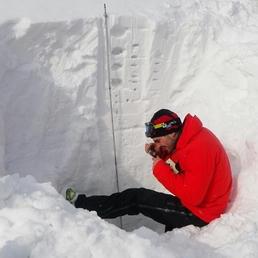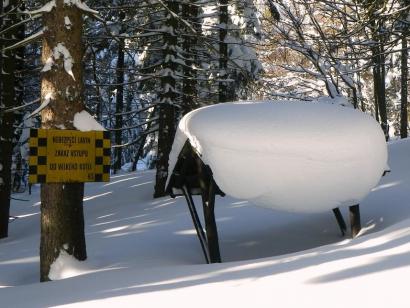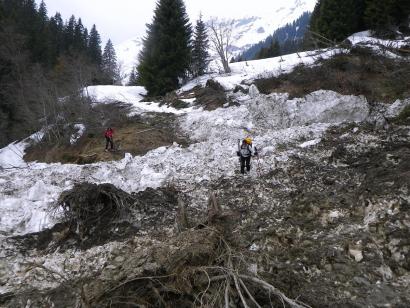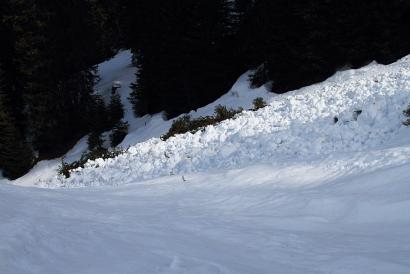
Avalanche danger factors
watch your back
Terrain
Slope
It is logical that the release of avalanches need an certain slope angle. For the occurrence of avalanches are generally the most risky slopes with an inclination of 30 ° or more degrees, allowing large amounts of snow to accumulate and release in a huge masses. However, this does not mean, that the milder slopes are avalanche free. Slopes of more than 50 °, then in Central European conditions have generally not continuous snow cover and falls off continuously.
Exposure of the slope
Or also the slope orientation in relation to the cardinal points. Generally are considered to be the most risky shady northern, northwestern and northeastern slopes. Here the influence of cold conditions without sunlight snow layers remain long unrelated, can create unstable forms of snow and the risk of avalanche increases. This is true for most of the winter. Not so in the spring when strong thermal radiation on the southern and southwestern slopes could cause soaked snow base and release of large base avalanches.
Terrain surface
The most dangerous are bare grassy slopes we know such from Jeseníky. Grass is an ideal base for the slide of avalanches. Slope covered with scrub and large boulders are safe until is this stabilizing element continuously covered by snow. The safest zone is then a slope continuously covered by dense forest. On the other hand sparse deciduous forest would be the best choice.
Weather Conditions
New Snow
It is the most important factor of the avalanche danger. The snow is intense, the avalanche danger is higher. According to an expert on the issue of avalanche Werner Munter is for a critical mass of new snow contested within one to three days considered:
10-20 cm under unfavorable conditions such as high winds or temperatures lower than -8 ° C
30-50 cm under suitable conditions, ie low wind or low temperatures below freezing
Wind
The wind is considered to be the architect of avalanche slopes. And it's really true. The strength and direction of wind significantly affect the storage of snow on the leeward slopes in the couloirs and fields. When the wind speed 7 m / s (25 km / h) is the increment of snow on the slope of 10 to 40 cm per day. In Czech and Slovak conditions is northwest flow and thus saves the most snow in the southern and south-eastern exposures.
Temperature
An alarming signal for increased avalanche danger are long lasting low temperatures below -10 ° C. Creating the conditions for the emergence of so-called moving unstable layers of snow. The other extreme is contrary strong warming that causes defrost snow, snow damping layers and thus a significant reductionof the whole cover stability .
Rain
Rainfall have also resulted in a significant reduction in the stability of the snow cover. Free water overloads the snow cover, causing avalanches release of heavy wet snow avalanches, or base avalanches.
Human
Author: Jan Navratil






















